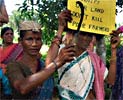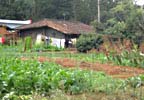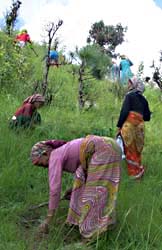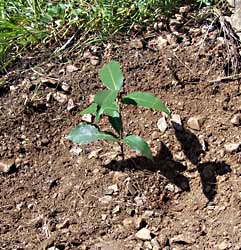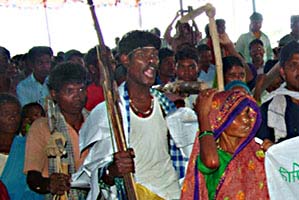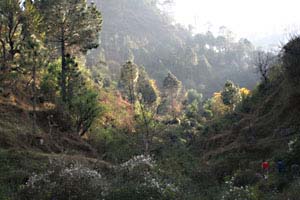Planting Trees
Himcon, Uttarakhand South-West
Overview photo series and articles about constructive work
Photos about afforestation
Deforestation is the biggest problem in rural India today. Because
agriculture is completely dependent on a good forests in the neighbourhood. When the forests are cut, the
rivers, streams and springs will dry up in the summer time and there only will be water in the monsoon, when you
need it least, because it is raining already a lot.
The forests provide grasses, herbs and leaves for fodder for the cattle, which will produce the
manure for the fields. In the forests villagers can find other herbs to mix with the dung to make a nice compost
for the fields. The forests give the villagers much more: tubers, roots and fruits to eat; medical herbs for good health; fire wood
to cook and bamboo and other wood for construction. When there are many
forests in the neighbourhood there will be better rains and in summer time it will not be that hot.
So: the best thing to help agriculture and improve village life in general is to plant many new trees and protect
the the old trees against the timber mafia. That is what many villages already do. In Orissa for example there are many
thousands of village forest protection committees.
Also development organisations help villagers growing saplings in special nurseries, organising work camps to plant small
trees and dig small ponds to collect water, and assist villagers to fight against cutting trees by the timber mafia, which is
connected with the Forest Department. On another page you will find pictures about Raksha Sutra actions in Uttarakhand, where
women put a holy thread on the tree to make it clear the tree is as a brother for her and she will protect him with her life.
It is important to plant a nice mixture of all sort of trees the villagers need, and which will grow well in that area. In the
first place trees which give a nice humus in the forest, which will be the natural 'sponge' to absorb the monsoon rainwater for the
whole year. In the second place: good fodder trees. And trees for fire wood, timber and fruits.
The British cut a lot of teak and oaks to build their navy ships; and deodars for railway sleepers. Than they planted pine
trees for turpentine. After independence the Forest Department went on in the same colonial way. They also transformed divers forests
in timber mines, for example with only sal trees for construction, or eucalyptus for the paper factories. But the pine needles and eucalyptus
leaves don't give good humus, fodder or compost.
Go to the next page: photo series about afforestation
Go to: Overview photo series and articles constructive work
